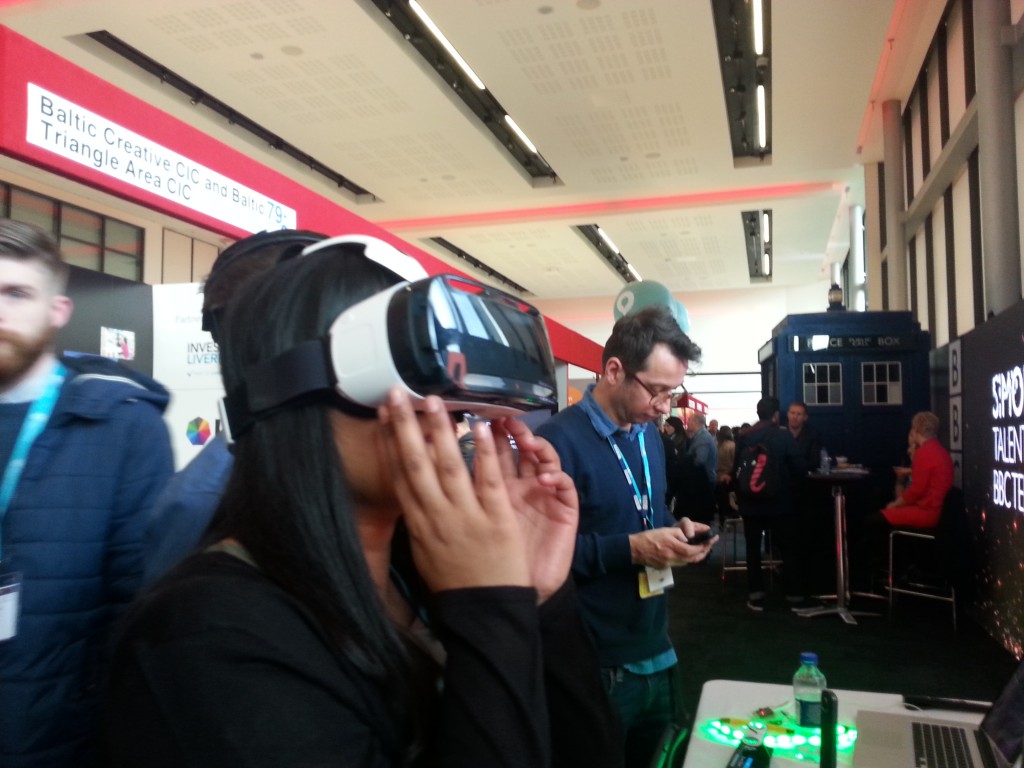
Tips on creating engaging, shareable content
Prolific North’s first ever live expo invited social media specialists, cutting edge marketers and content specialists based in the north of England to come together to share their knowledge and expertise. They packed out Emirates’ Old Trafford Cricket ground in Manchester to discuss the digital landscape, both in the north and around the globe. Trips 100 Editor Kirstie Pelling analysed what lessons a blogger could take away from it…
It is unsurprising Prolific North Live was trending on Twitter for much of the day. I think it’s safe to say that no advertising specialist, content creator, broadcaster or digital innovator would come to an exhibition without a phone. But in truth, the phone is the most modest gadget in the room. Some people are walking around with personal TV screens playing content above their heads. (‘Does my bum look big in this monitor?’) They have brought mobile cinemas, drones, mini animation studios, Oculus Rift headsets, 360 cameras and yes, the Tardis. (What better gadget for predicting the future?) They have also brought a fair amount of global knowledge to this local conference. While the idea is to celebrate and discuss northern innovation, their sights are set far into the distance. And far into the future.
While waiting to hear the keynote, I ask the brand manager of a holiday bookings website what sessions he recommends. He points me towards the lectures on content. “There’s someone from Paddy Power speaking; it’s always worth watching what those guys are doing.” I head straight down to the keynote theatre.

Entertain and Innovate
Paddy Power is just one of three household brands leading the content session. Paul Mallon is the betting company’s Head of Digital Engagement. His message is all about creating innovative content to make your brand stand out. “Be uncompromising,” he says, advocating risk taking and the pushing of boundaries. Paddy Power advertising has a sense of humour and there is a fair bit of chuckling in the room as he shows us some of the brand’s social media campaigns; both those that have worked and those that haven’t. The brand’s content can also be quite controversial and the mainstream press enjoys picking apart campaigns that have delighted or shocked. Paul warns that not all humour hits the mark and he recommends trying lots of different things without being afraid to fail and abandoning any strategies that just don’t work. But if you are poking fun at others, you need to be prepared to apply the same sense of humour to your own content and brand and be self- deprecating, he warns. He winds up by recommending that you spread a variety of content across your different platforms. “Don’t spew the same stuff across all channels.”
Be different yet true
Paul Sinclair, Head of Brand and Social Media for MBNA begins by saying the firms content has less leeway than Paddy Power to shock and awe due to the nature of the product. But he still stresses the importance of using creativity to break through the ‘whitewash’ of the net and broadcasting. He shows us the recent MBNA campaign which introduced the world to Payment Ninjas. “Be different but stay true to yourself,” is his headline advice. He agrees with Paul Mallon that stories are more memorable when they challenge convention. But he advises that your content doesn’t just do that for the sake of it; -make sure it has a purpose and fits with your brand. He mentions Coca Cola’s Share a Coke campaign where they looked inwardly at what was iconic in terms of their brand, while keeping product at the heart. “Understand what you are, what your purpose is and how you can cut through the market place” he advises. “Without strategy, content is just stuff and the world has enough stuff.”
Keep it short, sharable, modular and mobile
Stuart Rowson is Editor of BBC Sport Online. He is the final speaker of the session and his message is not that content is king but that mobile content is king. In short, don’t worry about what your website looks like on a desktop; focus on what it looks like on a smartphone. He makes comparisons between the Olympics of London and Rio, describing London as the first Olympics with live/dynamic coverage, and suggesting Rio will be all about mobile coverage as time differences mean it’s a question of ‘stay up or catch up.’
He advises you cut through the noise by keeping your content short and shareable, and points to research that says time spent watching content on mobile devices is on average a third less than desktops. Meaning that engagement on a story will keep people entertained for 30 seconds where a desktop may have kept people engaged for an average of 45.
He explains how BBC sport went from publishing 700 word match reports to producing modular content that contains, for example, analysis, graphics, ‘what the managers say,’ what’s happening next, and predictions for future. Take the story on, involve and analyse, he recommends. Basically, “Put as much content as you can in a very small space.”
Involve your audience or reader
Stuart also recommends being strategic about what you are pushing out there. At a micro level if you can. Think of your readership or audience and provide what they want, in a way they want it. Take your content to them. “In our morning meetings we ask what are we talking about today and how do we get our audiences involved.” He recommends feeding what they share back into content and thinking up interesting ways of packaging and reusing content. He cites BBC Sports ‘Pint-Sized Ashes;’ where bits of commentary were turned into three minute online videos. If something works, he says do it again. Day in and day out if your audience like it.
All the speakers recommend embracing opportunities for disruption- trying something different and see if it works. And that’s what I take away from the session. Break the mould and challenge convention. Before we leave Stuart asks if people in the room have seen the opening of the James Bond film Spectre, “It’s like digital jazz hands and you can’t move away.”



